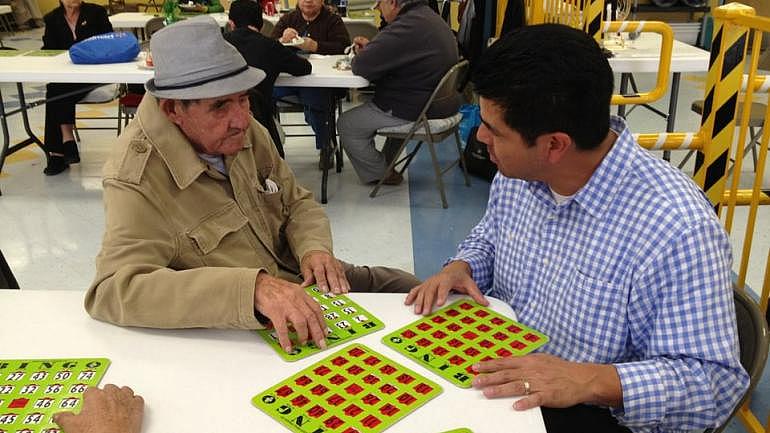Covered California Making Limited Inroads with Uninsured Latinos

When Covered California reports its health insurance enrollment figures each month, one worrying statistic consistently jumps out –- the low number of Latinos signing up.
Only 18.7 percent of people who signed up for Obamacare in the first three months of enrollment described themselves as Latino (this percentage could be slightly higher or lower as this answer was not required by participants). Yet this key demographic represents more than half of California’s uninsured.
The low numbers of Latinos signing up became the top news story out of the exchange in January, overshadowing its positive numbers when it comes to signups.
See Also: Capturing a historic moment: Obamacare in California
Some state lawmakers have been highly critical of the limited inroads in reaching this key population, a concern echoed by directors of the Covered California board at their last meeting.
State Sen. Norma Torres, D-Pomona, told the L.A. Times that the exchange's enrollment figures for Latinos are "absolutely unacceptable." Meanwhile, in an interview with the Sacramento Bee, Rep. Loretta Sanchez, D-Santa Ana, spelled out the practical implications of the low numbers for the overall success of Covered California: “We cannot make health care insurance affordable and accessible for everyone without filling this void.”
Hugo Ramirez, who coordinates outreach and enrollment among Latinos for the Los Angeles non-profit Vision y Compromiso, offers a few explanations. His enrollment efforts suffered because Covered California didn’t develop a printable Spanish-language version of the enrollment form until Dec. 30. Applicants have been able to complete the online enrollment process in Spanish since Oct. 1, but, he notes, many uninsured Latino families do not have a computer at home.
Another barrier to Latino enrollment has been the difficult situation of immigrant families who have some members who are eligible for insurance and others who are not because they are undocumented. “They are in fear,” says Ramirez. “Especially in mixed-status families, we have to help them to not fear applying, to let parents know that they can apply for a family member who is citizen, and [their own immigration status] won’t be shared.”
Covered California has received a letter from Immigration and Customs Enforcement assuring applicants of just that. The letter is posted on CoveredCA.com, and both certified enrollment counselors (CECs) and outreach organizations show copies of the letter to applicants.
And for many low-income Latinos, especially those who never had insurance before, signing up just doesn’t seem like a wise financial decision.
Cynthia Carmona, director of government & external affairs at the Community Clinic Association of Los Angeles County, said that many Latino applicants come into clinics lacking the most basic information about health insurance.
“People are mistrustful of the system, [wondering] what does it mean for them? Cost is another big concern, she adds. “Even if it’s only $150 a month, that’s a lot if you’re on a tight budget.”
Karen Lauterbach, community health insurance program manager at the Venice Family Clinic, said that people who have had health insurance before, and see the benefit of it, have the easiest transition to signing up through Covered California.
“The ones [who] have the most trouble, and we see this sort of thing more in the Latino community, are the ones who don’t have that point of reference for health insurance. They hold off on medical care, and don’t do anything until someone really needs to go see doctor,” Lauterbach explained. If someone has had this sort of “episodic care” and has never been faced with a massive emergency-room bill, they might simply opt not to be covered, since the $95 tax penalty “doesn’t seem too bad right now,” she said.
Expanded Medi-Cal has been one of the less-publicized success stories of Covered California — yet some see Latino applicants as less than enthusiastic about signing up.
“For a lot of Latinos, they have a stigma about Medi-Cal — ‘I don’t want it because it’s a social-welfare program,’” explained Lilliana Martinez, interim director of health education and outreach at the Children’s Clinic in Long Beach. “They want to pay for it.”
Covered California spokeswoman Lopez said that the outreach efforts of the exchange and its partners will continue. On Jan. 7, Covered California announced the release of two new Spanish-language TV commercials (The California Endowment, which funds Reporting on Health, is a big funder of the state’s outreach and enrollment effort.).
While such moves can’t hurt, many believe the personal touch will remain the best way to enroll Latinos in Covered California.
“A common feeling is that the Latino community is going to need a lot of one-on-one outreach,” Carmona said. “They’re not going to get very far with media campaign; we’re going to have to bring them into the fold, on the ground.”
Related Stories:

